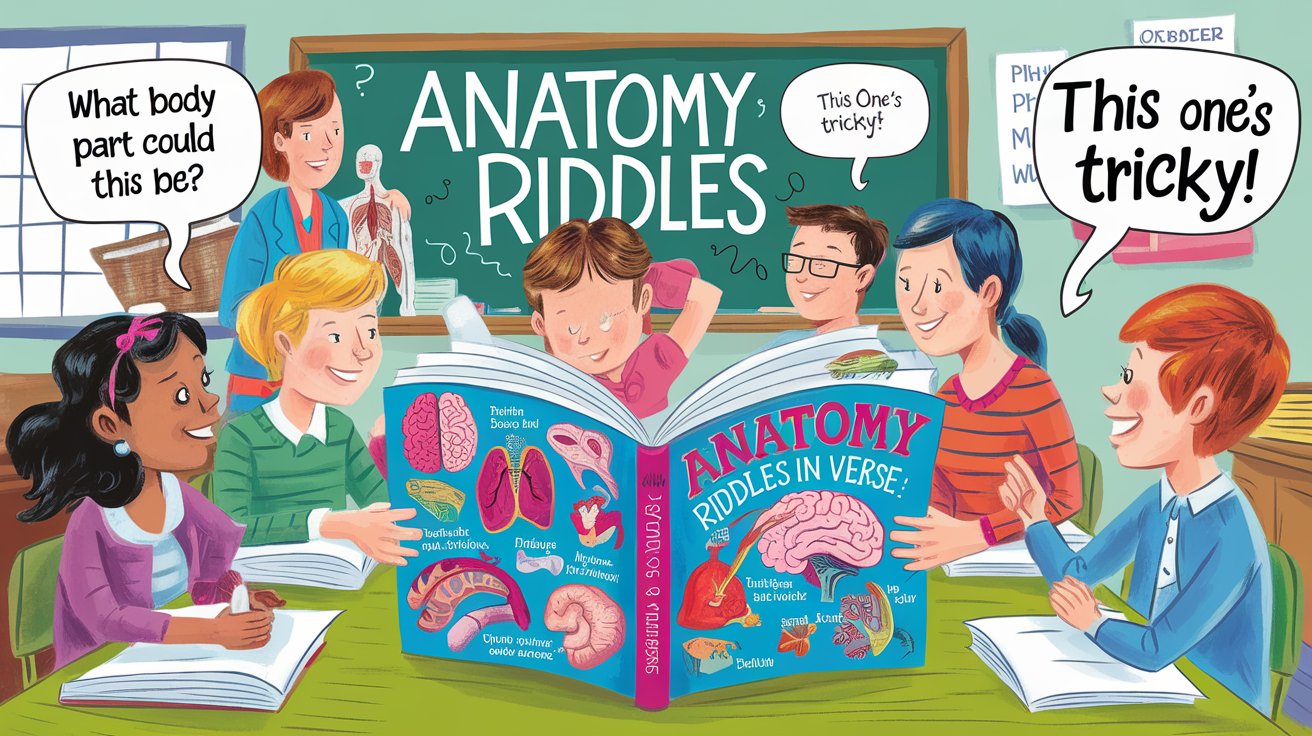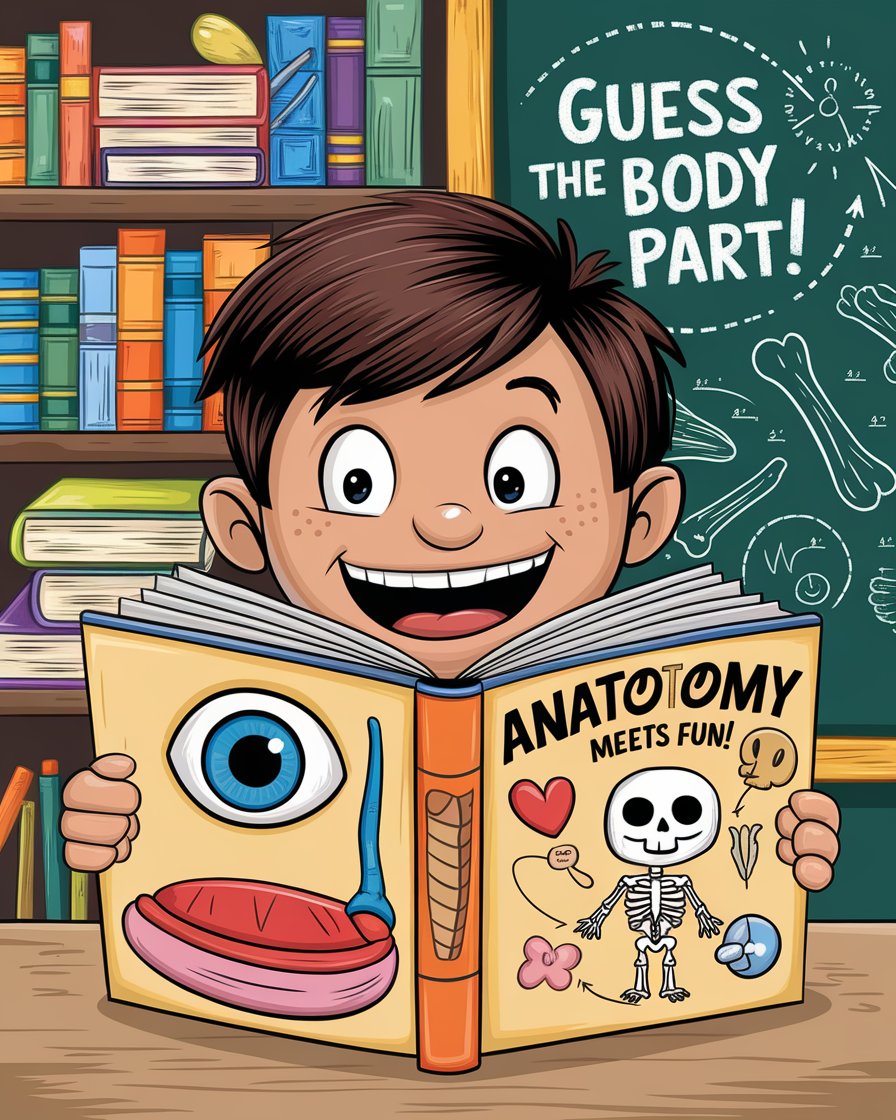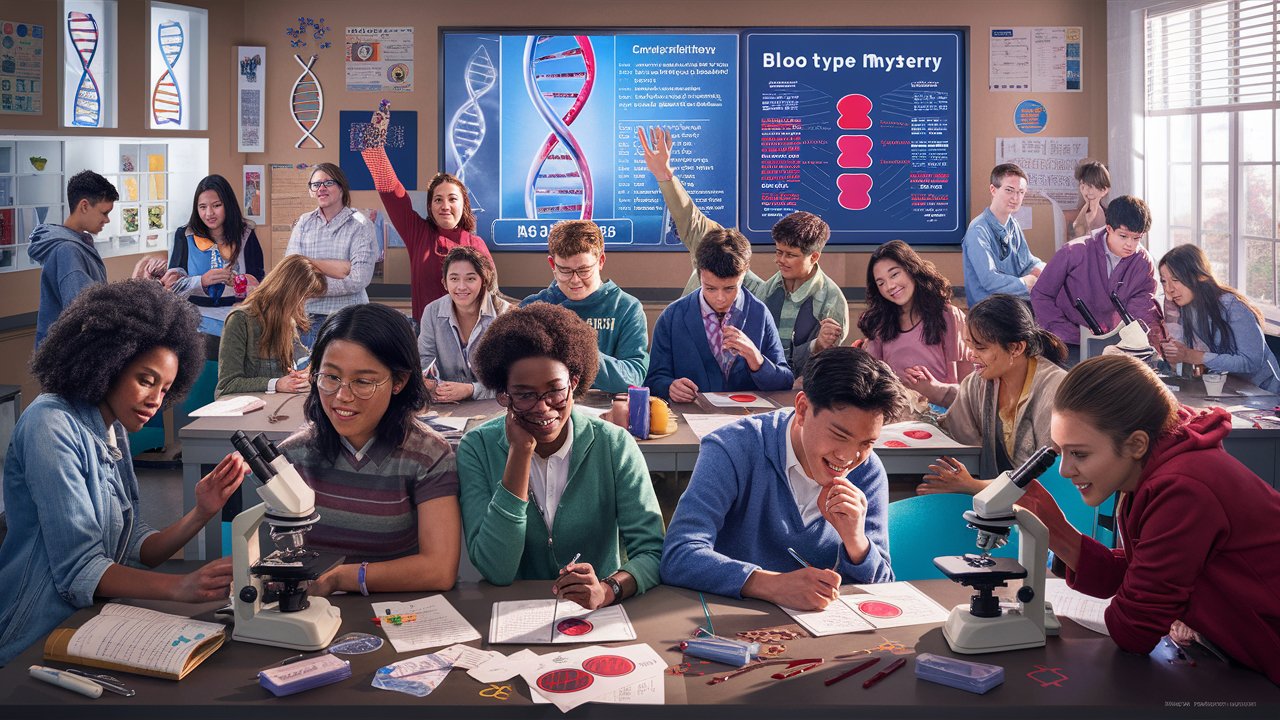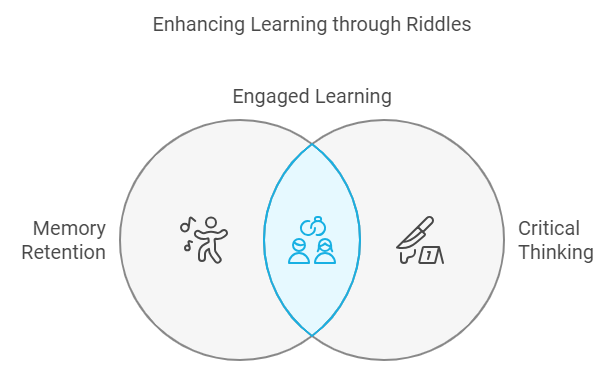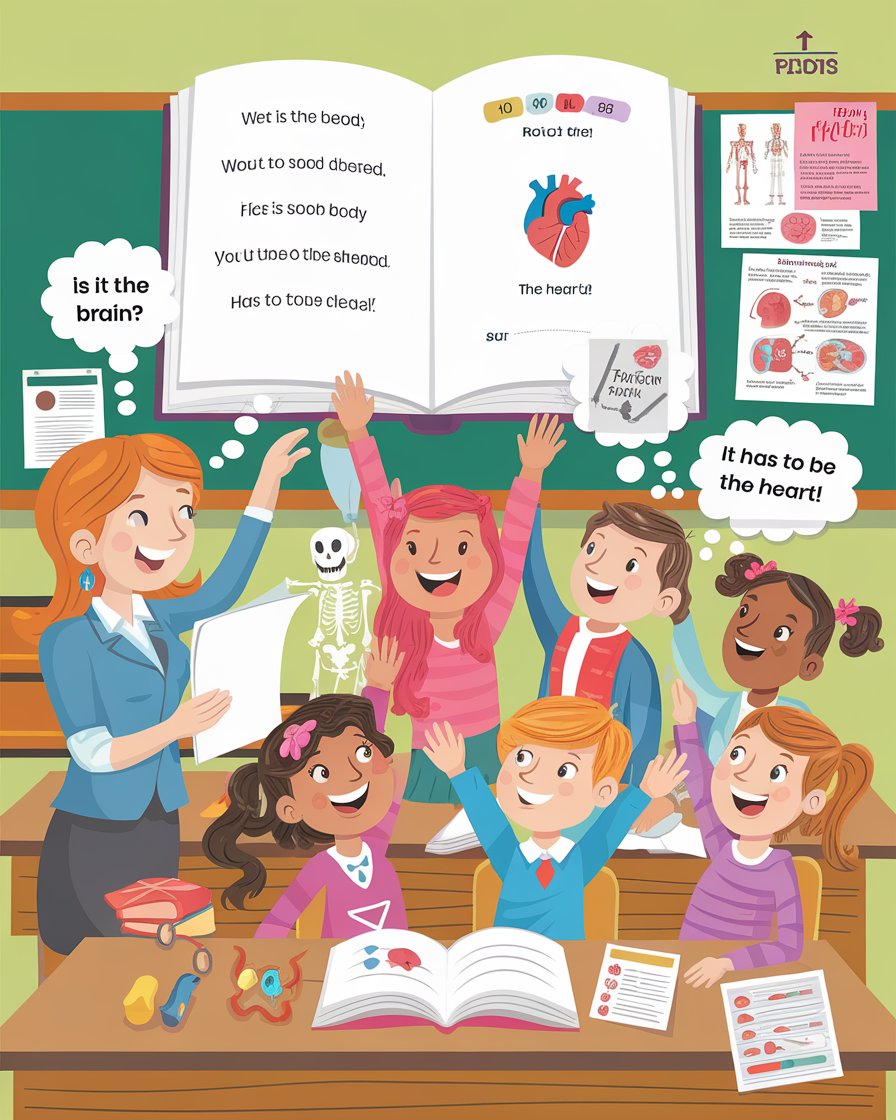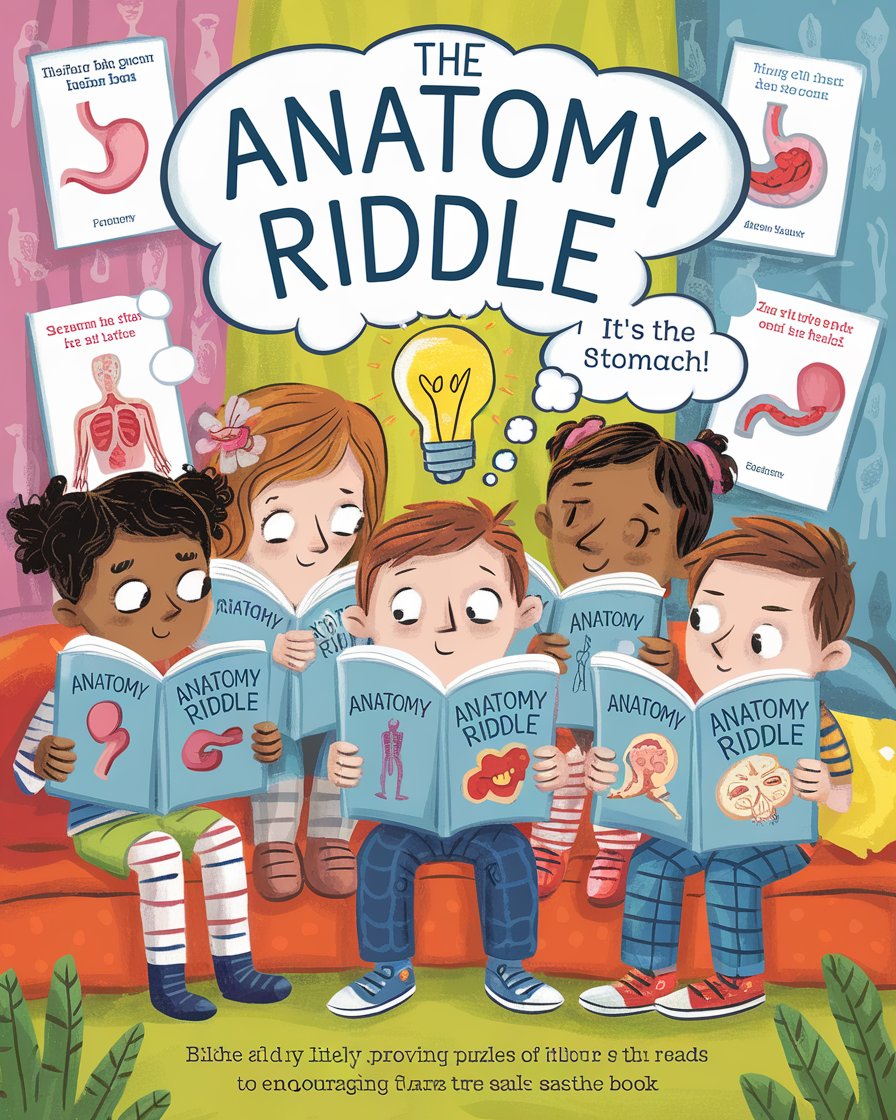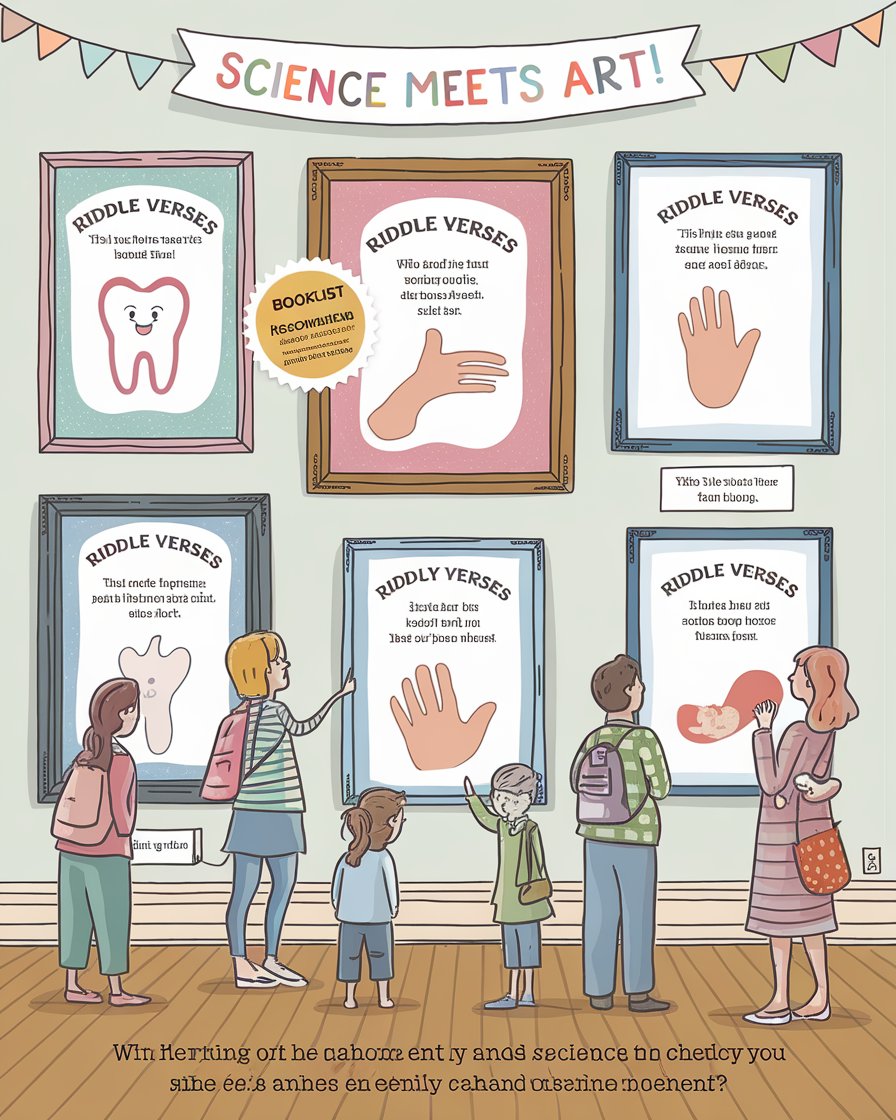Introduction
Leslie Bulion’s anatomy riddle collection brings science and poetry together in an engaging, unique way. Each riddle is crafted as a poetic puzzle, inviting readers to solve clues about different body parts while learning about human anatomy. Accompanied by Mike Lowery’s lively illustrations, the book blends scientific facts with clever verse, making the study of body parts fun and accessible. This creative approach helps young readers build a foundational understanding of anatomy, promoting curiosity and learning through riddles.
Both educational and entertaining, these anatomy riddles cater to a wide audience, sparking interest in students, teachers, and even casual readers. Bulion’s work has gained praise from sources like Booklist, who call it an “exquisite gem,” ideal for cross-curricular learning. The collection showcases how blending art and science can create an unforgettable learning experience.
Key Takeaways
- Leslie Bulion’s anatomy riddles blend science and poetry, making anatomy engaging for young readers.
- Each riddle serves as a puzzle, inviting readers to guess body parts through poetic clues.
- Mike Lowery’s illustrations add visual hints, supporting learning in a playful, accessible way.
- The book is highly praised for its ability to connect science and art in a classroom-friendly format.
- This unique approach promotes critical thinking and creativity in exploring human anatomy.
- Bulion’s collection is celebrated as a valuable resource for cross-curricular education.
Exploring Leslie Bulion’s Anatomy Riddles for Young Minds
Leslie Bulion’s anatomy riddle collection invites readers on a journey through the body, blending curiosity with science in a delightful way. Through her unique verses, young readers explore the fundamentals of human anatomy while puzzling over clever rhymes. Inspired by the structure of classic poetry, each riddle introduces an anatomical concept subtly, providing hints that engage readers’ critical thinking skills. Mike Lowery’s playful illustrations complement Bulion’s words, offering whimsical visuals that hint at the answer without giving it away. This book’s combination of verse and illustration makes anatomy fun, accessible, and an engaging choice for educators wanting to introduce science poetry in the classroom.
The Educational Value of Anatomy Riddles in Youth Literature
Anatomy riddles serve as a fun educational tool, particularly in youth literature. By weaving scientific facts into verses, Leslie Bulion’s collection provides a unique way for children to engage with anatomy. Each riddle brings attention to essential body parts while keeping the content accessible and age-appropriate. The playful tone encourages young readers to guess, sparking curiosity and supporting memory retention through puzzle-solving. For educators, this offers an innovative way to introduce body parts and physiology in science lessons, all while keeping the classroom environment lively and engaging.
How Mike Lowery’s Illustrations Enhance Learning
Illustrations play a crucial role in Leslie Bulion’s anatomy riddles by providing visual hints that enrich the learning experience. Mike Lowery’s artwork adds a whimsical dimension to each riddle, helping readers form connections between the verses and the body parts they describe. These visuals help reinforce complex anatomical ideas, making them easier to remember and understand. Lowery’s playful style aligns with the book’s educational goals, supporting both logical and creative learning processes and making the book a visually engaging experience for children and educators alike.
Ways Anatomy Riddles Encourage Learning and Curiosity
1. Boosts Memory Through Rhythmic Verse
Riddles in rhythmic verse format help embed information in young minds, as the rhythm and rhyme patterns aid memory retention. This playful format keeps students engaged, making the facts easier to recall.
2. Supports Cross-Curricular Learning
Using anatomy riddles in the classroom allows teachers to cover both science and language arts. This combination helps students connect subjects in a meaningful way, showing how poetry and anatomy can overlap in educational settings.
3. Fosters Critical Thinking and Problem-Solving
Each riddle invites students to analyze clues carefully, encouraging them to think critically as they solve the puzzles. This promotes problem-solving skills and attention to detail, both valuable skills for young learners.
4. Appeals to Different Learning Styles
The combination of text and illustrations caters to diverse learning preferences. Visual learners benefit from Mike Lowery’s art, while auditory and kinesthetic learners engage with the rhythm and format of the riddles.
5. Makes Science Approachable and Fun
By presenting anatomy in a playful format, the book removes the intimidation often associated with science topics. The lighthearted tone and interactive nature of the riddles make learning about the body accessible and enjoyable for all ages.
Gross Anatomy Riddles in Verse: A Creative Learning Approach
The “Gross Anatomy Riddles in Verse” series is more than a simple reading experience; it is an invitation to learn through puzzle and play. Each poem presents a body part as a riddle, guiding readers to think critically and connect clues in a format that naturally embeds anatomical knowledge. This approach offers a layered educational experience, where readers interact with both the structure of poetry and the science of the body, using puzzle poems to uncover the answers. The book, with contributions from artist Mike Lowery, seamlessly blends fun with learning, making it a valuable resource for cross-curricular learning in schools.
Integrating Anatomy Riddles into Cross-Curricular Lessons
Using anatomy riddles in verse within the classroom encourages cross-curricular learning, connecting science with literature. Teachers can integrate these poems into anatomy or health lessons, using the riddles to build foundational anatomy knowledge while also teaching poetic forms. Each riddle invites students to think critically, as they analyze verses to uncover clues about body parts. This method stimulates both left- and right-brain activity, offering a multidimensional learning experience that appeals to various student interests and learning styles.
Encouraging Problem-Solving Skills through Poetic Clues
Each riddle in “Gross Anatomy Riddles in Verse” presents a puzzle that encourages problem-solving, critical thinking, and observation skills. The poetic format requires readers to dissect clues carefully, making educated guesses about body parts. This guessing process is not only enjoyable but also helps improve attention to detail, as students learn to differentiate similar-sounding clues. The integration of science and art challenges young readers to use their full cognitive abilities, providing a well-rounded educational experience.
Case Study: Using Anatomy Riddles in a 5th Grade Science Class
A 5th-grade science teacher integrated Leslie Bulion’s anatomy riddles into a lesson on human anatomy, aiming to make the material more approachable for her students. She began by introducing a few riddles, encouraging the class to guess which body parts each verse described. The students, intrigued by the poetic format, eagerly participated, brainstorming possible answers and discussing clues from both the text and Mike Lowery’s illustrations.
To deepen the lesson, the teacher grouped students and assigned each group a different riddle to solve together. They used visual clues and worked collaboratively to decode the rhymes. By the end of the session, students had gained a basic understanding of various body parts and functions, all while practicing teamwork and problem-solving. This hands-on approach, blending poetry with anatomy, turned a challenging topic into an interactive experience, fostering both enthusiasm and comprehension in the classroom.
The Role of Poetic Puzzles in Understanding Body Parts
Poetic puzzles have an exceptional role in helping readers, especially younger audiences, learn about the body’s structure and function. With clever use of verse inspired by Shakespearean and other classic forms, these riddles introduce each body part in an engaging format that appeals to diverse learning styles. This method appeals to readers’ natural curiosity and cognitive engagement, especially when coupled with visual clues that reinforce understanding. Whether educators are incorporating these verses into science lessons or children are discovering them at home, the blend of riddle and rhyme makes anatomy a memorable and enjoyable experience.
Building Curiosity and Engagement Through Rhyme
The use of rhyme in anatomy riddles taps into the natural curiosity that young readers have for puzzles and mysteries. Each poem provides an exciting learning opportunity, encouraging students to actively participate by guessing and connecting the clues to body parts. This engagement with the text creates an interactive reading experience where curiosity and education combine. The memorable rhymes ensure that students recall both the body part and its function, fostering long-term knowledge retention in an enjoyable format.
How Visual Clues Support Anatomical Understanding
Visual clues in these poetic puzzles serve as an effective supplement to the riddles, reinforcing students’ understanding of body parts. Lowery’s illustrations subtly guide readers, adding context and aiding in solving the riddle without giving away the answer directly. This interaction between visual and textual content helps readers of different learning styles to comprehend anatomical concepts better, bridging the gap between abstract ideas and concrete understanding. The visuals thus enhance the educational impact of the riddles, making anatomy more relatable.
The body is a mystery, waiting to be discovered through rhyme and verse. — Leslie Bulion
The Art of Educational Verse: Whimsical Insights from Booklist and Thriftbooks
The use of verse in educational books has grown in popularity, and Bulion’s anatomy riddle book is a standout example. According to Booklist and other reviews, this collection is both an “exquisite gem” and a “smart pick” for readers of all ages. Thriftbooks praises the series for combining science and art in an award-winning format that appeals to left- and right-brained readers alike. The poetic approach simplifies complex scientific concepts, making them approachable and engaging. This collection not only invites readers to ponder anatomical questions but also encourages a love of learning through creative verse.
Why Anatomy Poetry Appeals to All Ages
Anatomy poetry, especially with a humorous twist, appeals to a broad range of readers, from young students to adults who appreciate a unique learning approach. Reviews from sources like Booklist highlight how this style of educational verse combines science with artistic charm, making it enjoyable for left- and right-brained readers. Whether for classroom use or personal exploration, Bulion’s anatomy riddles open up a welcoming space for readers of all ages to learn about the human body in a fun, nontraditional way that promotes lifelong curiosity.
The Benefits of Mixing Science and Art in Educational Books
Books that mix science and art, like Leslie Bulion’s anatomy riddle collection, achieve an effective balance between factual knowledge and creative expression. By blending the structure of poetry with scientific themes, these books appeal to students with diverse learning preferences, creating a richer educational experience. According to Thriftbooks and Booklist, such books stand out as memorable learning tools, providing both factual insight and an engaging reading journey that goes beyond traditional methods of teaching anatomy.
Conclusion
Leslie Bulion’s anatomy riddle collection masterfully combines the worlds of poetry and science, creating a distinctive and enjoyable way for readers to explore human anatomy. Through clever verse and thoughtful clues, readers engage deeply with each riddle, piecing together knowledge about body parts in a memorable way. Mike Lowery’s illustrations add a layer of visual support, helping to guide young minds and foster an appreciation for both art and science. This approach offers a unique learning tool that’s as educational as it is fun.
This collection is more than just a book; it’s an invitation to think critically and creatively. As readers tackle each riddle, they experience the joy of discovery, making anatomy both approachable and engaging. From classrooms to personal libraries, this award-winning collection has carved a place as a standout resource for anyone curious about the human body.

